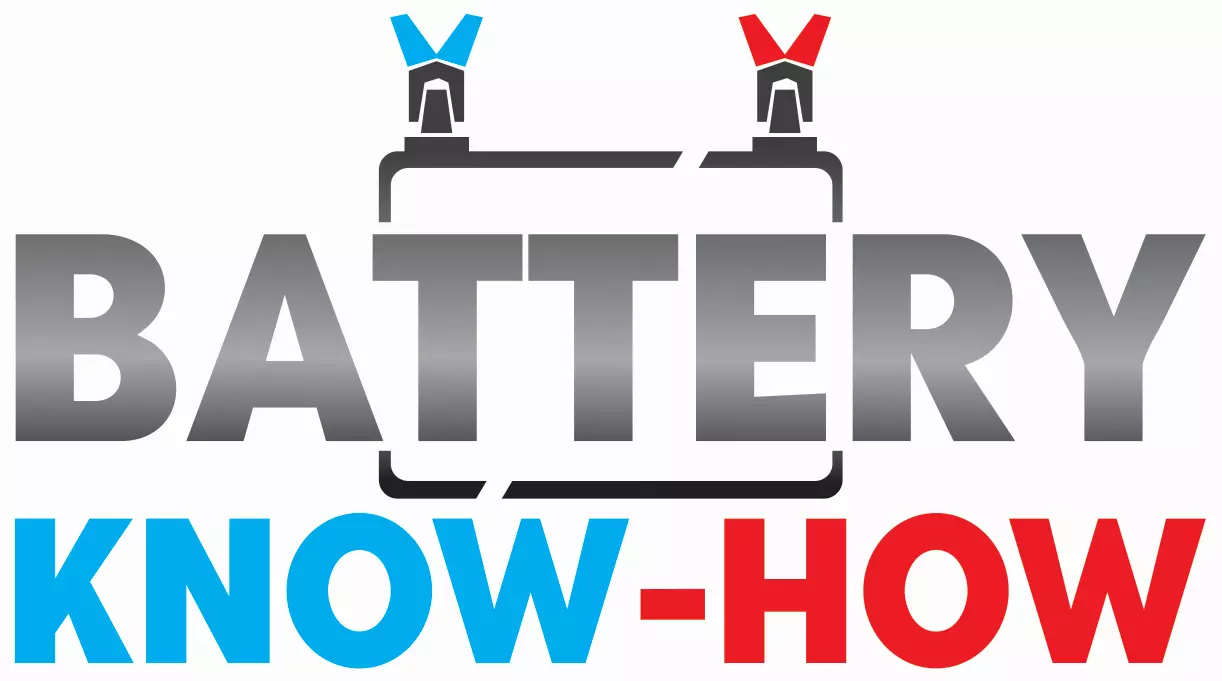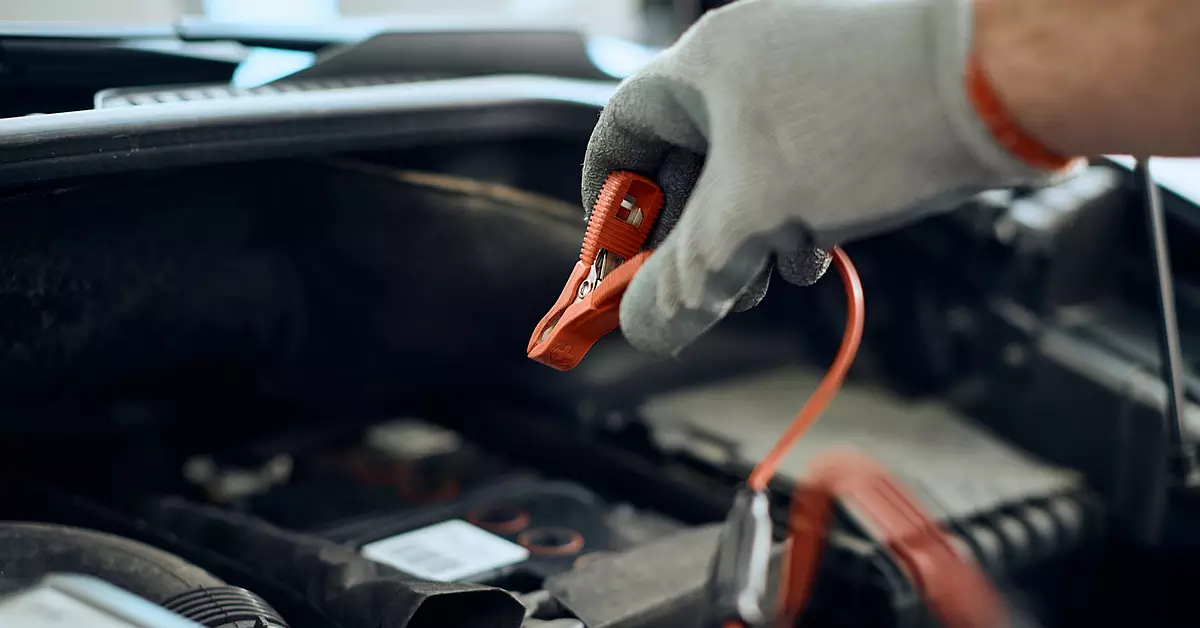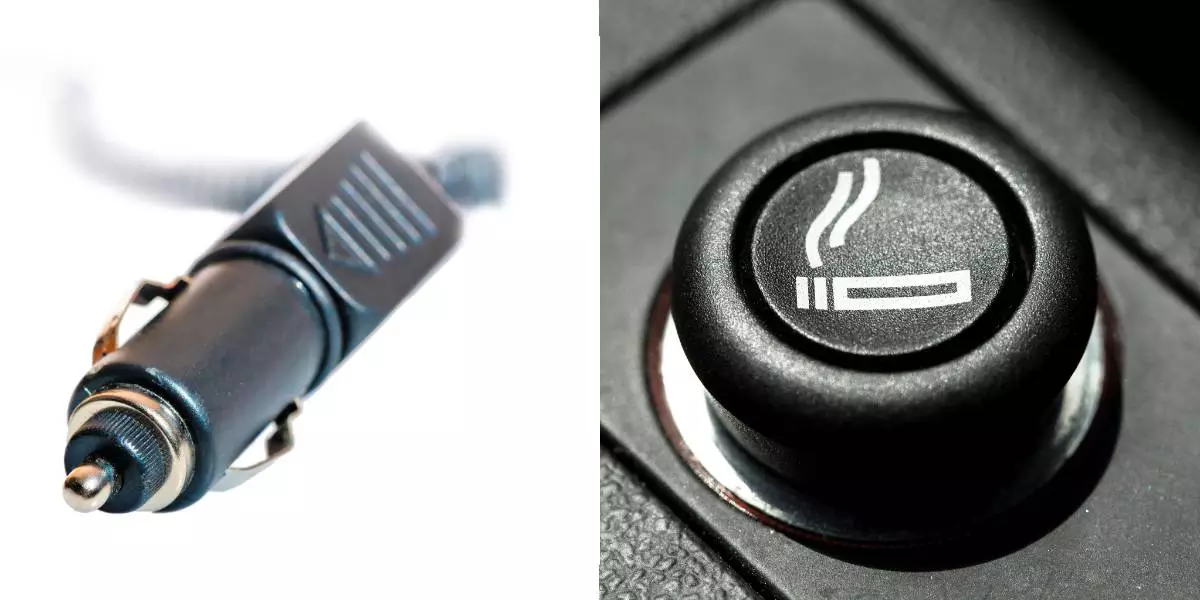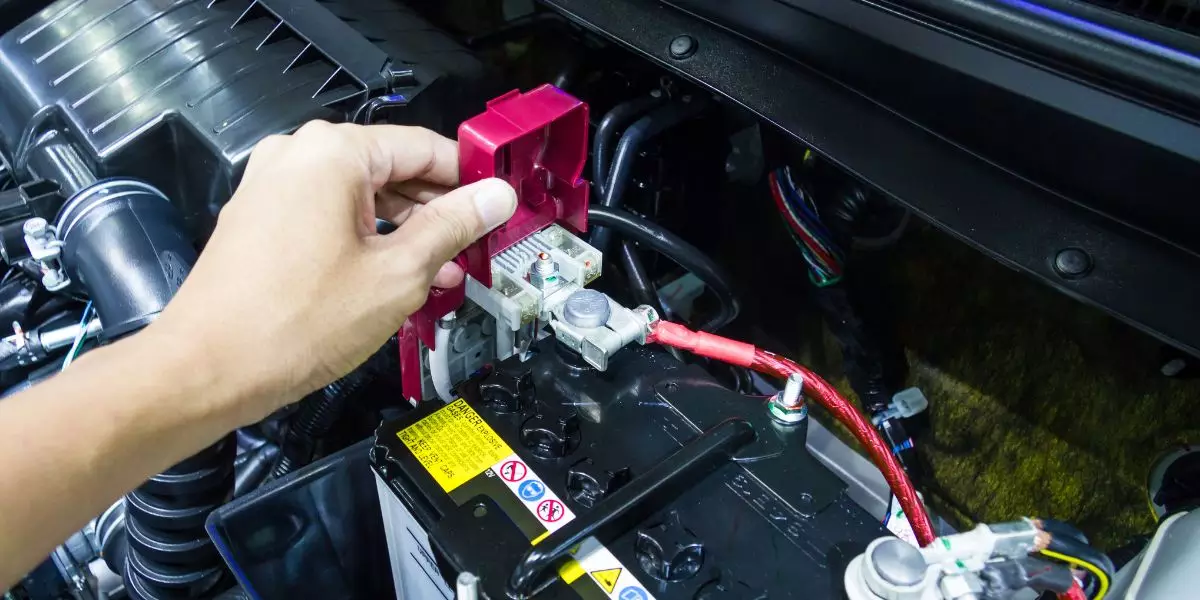Yes, it is possible to hook up a car battery backwards.
Beware, because this is a risky maneuver that can lead to disastrous consequences! The dangers of reversing car battery connections are numerous and should not be taken lightly. Incorrectly hooking up the battery can cause severe electrical damage, negatively impacting your engine’s performance and electronics. Moreover, it poses potential fire hazards and safety concerns that could put both you and your vehicle at risk.
So, how do you identify if the battery connection has been reversed? Look out for signs like sparks or smoke, dim lights, or even a dead engine. If you suspect a reversed connection, taking immediate action is crucial.
Fortunately, there are steps to fix and prevent this problem from occurring in the future. However, seeking professional help and repairs might be necessary to ensure your safety and avoid further damage.
Key Takeaways
- Reversed battery connections can cause severe electrical damage and negatively impact engine performance and electronics.
- Signs of a reversed connection include sparks, smoke, dim lights, or a dead engine.
- Immediate action is crucial if a reversed connection is suspected.
- Seeking professional help and repairs may be necessary to ensure safety and prevent further damage.
The Dangers of Reversing Car Battery Connections
You need to be extremely cautious when connecting a car battery backwards as it can result in severe damage to the vehicle’s electrical system and potentially cause a dangerous situation.
Reversing the battery connections can have detrimental effects on the car’s electrical system, including blown fuses, damaged wiring, and even fried electronic components. Troubleshooting reversed battery connections can be time-consuming and expensive, requiring professional assistance in some cases.
Common mistakes when hooking up a car battery include not paying attention to the polarity markings on the battery terminals or incorrectly connecting the positive and negative cables. Proper battery installation is crucial for preventing these issues.
To avoid such mistakes, always double-check that you are connecting the cables correctly before tightening them down securely. Taking DIY precautions like labeling cables or using color-coded cable ends can also help prevent battery hookup mistakes.
Remember, incorrect battery hookup can lead to serious electrical damage caused by reverse polarity connections without proper safety measures in place.
Electrical Damage Caused by Incorrect Battery Hookup
Mistakenly connecting the battery terminals in reverse can result in severe electrical damage. It’s crucial to avoid reversed polarity when hooking up a car battery, as it can lead to various issues. Here are some potential consequences:
- Short Circuit: Reversed polarity can cause a short circuit in the electrical system of your car. This can damage sensitive electronic components and wiring.
- Corrosion Risk: When you connect the battery incorrectly, it increases the chances of corrosion on the terminals and connectors. Corrosion buildup can hinder proper electrical flow and potentially cause further damage.
- Voltage Surge: The reversed connection may lead to a sudden voltage surge that can overload and fry electronic devices in your vehicle, including the engine control unit (ECU) or other critical systems.
Furthermore, incorrect battery hookup could even result in battery acid leakage, which poses additional risks. These electrical damages caused by reversing car battery connections can have significant effects on engine performance and electronics without proper precautions.
Effects on Engine Performance and Electronics
Reversing the polarity of a car battery can have detrimental effects on engine performance and the functionality of electronic systems. When you hook up a car battery backwards, it can cause engine misfires and voltage fluctuations, leading to a rough running engine and poor overall performance.
Additionally, dashboard warning lights may illuminate due to the incorrect flow of electricity, indicating potential damage to various components. You may also experience a loss of power while driving, as the reversed polarity affects the fuel injection system and other vital engine functions.
Furthermore, electrical shorts can occur in sensitive electronics such as the alternator or starter motor, potentially causing costly repairs. These issues serve as warning signs for potential fire hazards and safety concerns that could arise from reversing the battery’s polarity.
Potential Fire Hazards and Safety Concerns
When connecting a car battery backwards, you run the risk of potential fire hazards and safety concerns. One of the main risks is a battery explosion, which can occur due to the buildup of gases inside the battery.
Additionally, reversing the polarity can cause severe damage to your vehicle’s electrical system, leading to costly repairs or even rendering it inoperable.
Battery explosion risk
Contrary to popular belief, hooking up a car battery backwards can pose a serious risk of explosion. It’s not just about the battery polarity being reversed; there are other factors at play that can lead to this dangerous situation.
Firstly, most modern cars have reverse battery protection built into their electrical systems. However, if your vehicle doesn’t have this feature or it fails, connecting the battery incorrectly can cause a spark near the car battery terminals. This spark can ignite any residual gases emitted by the battery, resulting in an explosion.
Secondly, improper connection may also cause battery terminal corrosion. This corrosion can increase resistance and generate excessive heat when electricity flows through it. With enough heat buildup, the battery case could rupture and explode.
Remember, connecting the car battery properly is crucial not only for preventing explosions but also for avoiding damage to the electrical system.
Damage to electrical system
If you accidentally hook up a car battery backwards, the risk of a battery explosion is not the only concern. Your vehicle’s electrical system can also suffer significant damage. The reverse polarity caused by connecting the battery incorrectly can lead to serious issues and potential hazards. To prevent damage to your electrical system and ensure car battery safety, it is crucial to take proper precautions when installing a new battery or jump-starting your vehicle. One important step is to always pay attention to the battery polarity markings (+ and -) and connect the cables accordingly. Additionally, using protective devices such as fuses or diodes can provide an extra layer of electrical system protection. Now let’s delve into the next section about signs and symptoms of a reversed battery connection.
Signs and Symptoms of a Reversed Battery Connection
If you accidentally connect a car battery backwards, there are several signs and symptoms that you may experience. You could be at risk of electrical malfunctions, which can lead to various problems with your vehicle.
Additionally, you might notice damage to fuses and wiring, as well as difficulties starting your engine. It’s also possible that the battery itself could fail due to the reversed connection.
Electrical malfunction risks
Experiencing an electrical malfunction in your car can pose significant risks. It’s crucial to prioritize electrical safety, especially when dealing with reverse polarity or incorrect battery installation. To prevent such mishaps, regular battery maintenance and following proper installation procedures are essential.
However, if you do encounter an electrical issue, there are troubleshooting tips that can help. For instance, checking the battery connections for any loose or corroded terminals is a good starting point. Additionally, inspecting the fuses and wiring for any signs of damage is crucial as they play a vital role in protecting your vehicle’s electrical system.
By addressing these potential issues promptly, you can prevent further damage and ensure the safety of both yourself and your car’s electrical components.
Fuses and wiring damage
One potential danger of an electrical malfunction in your vehicle is the risk of damage to the fuses and wiring, which can have serious consequences for the overall performance and safety of your car. Here are some important things to consider:
- Fuse replacement: If a fuse gets blown due to a reversed battery connection, it needs to be replaced promptly to restore proper functionality.
- Wiring repair: Incorrectly hooking up the car battery backwards can cause damage to the wiring system, resulting in shorts or even fires. Professional repair may be necessary.
- Electrical troubleshooting: After such an incident, thorough electrical troubleshooting is essential to identify any hidden damages that could affect various components of your vehicle.
- Engine diagnostics and safety precautions: To ensure everything is functioning correctly, engine diagnostics should be performed by a qualified technician who will also take necessary safety precautions before starting the engine again.
By understanding these risks and taking appropriate actions like fuse replacement, wiring repair, electrical troubleshooting, engine diagnostics, and safety precautions, you can prevent further problems from arising when dealing with engine starting problems.
Engine starting problems
Despite the potential risks and consequences, it’s crucial to address engine starting problems promptly to ensure the overall performance and safety of your vehicle.
If you’re experiencing difficulties starting your car after hooking up the battery backwards, there are a few troubleshooting steps you can take.
First, check the battery terminals for any signs of damage or corrosion and make sure they’re securely connected. If necessary, clean the terminals or tighten them properly.
You may also try jump-starting your car using another vehicle’s battery or seek professional help if needed.
However, if these measures fail to resolve the issue, it might indicate a more severe problem with your charging system or even require a battery replacement.
Addressing these problems promptly can prevent further damage and potential battery failure in the future.
Battery failure potential
To avoid potential battery failure, be mindful of the risks and consequences that can arise from engine starting problems. Here are four key factors to consider:
- Battery damage: Connecting a car battery backwards can cause irreversible damage, leading to costly repairs or the need for a replacement.
- Voltage surge: Reversing the polarity can result in a sudden surge of electrical current, potentially damaging sensitive components like the alternator, starter motor, or even the vehicle’s computer system.
- Short circuit: Incorrectly connecting the battery can create a short circuit, which may cause sparks or even an electrical fire.
- Corrosion risk and warranty void: Reversing the battery terminals can expose them to corrosive materials, increasing the risk of corrosion and voiding any warranty coverage.
By understanding these risks associated with engine starting problems, you can take steps to fix and prevent reverse battery hookup effectively.
Steps to Fix and Prevent Reverse Battery Hookup
Oops! Did you ever think about turning your car into a fiery explosion by hooking up the battery backwards? Well, it’s not something you want to experience. But if you’ve made that mistake, don’t panic!
Fixing this common error is easier than you might think. The first step is to check the battery polarity. You can do this by inspecting the positive and negative terminals on the battery. Another way is to use a multimeter to determine the correct polarity.
Once you’ve determined the correct polarity, ensure proper battery installation by connecting the positive terminal to the positive cable and the negative terminal to the negative cable. This will prevent any electrical damage caused by reverse hookup.
Remember, seeking professional help and repairs should be done if you’re unsure or unable to fix it yourself.
Seeking Professional Help and Repairs
If you find yourself in a situation where the battery polarity is incorrect, it’s highly recommended to seek professional help and repairs. This will ensure your vehicle’s safety and prevent any further damage. Professional assistance is crucial in these situations because they have the knowledge and experience to properly diagnose and fix any issues that may arise from a reverse battery hookup.
They can provide you with repair options tailored to your specific situation, saving you time and money in the long run. In addition, they can offer troubleshooting tips to help identify any common mistakes made during the process.
It’s important to note that preventive measures should be taken to avoid this scenario altogether, such as labeling the battery terminals or using color-coded cables. Remember, when it comes to your vehicle’s electrical system, it’s always better to be safe than sorry.
Conclusion
So, the next time you find yourself in a situation where you need to hook up a car battery, remember the importance of doing it correctly.
While it may be tempting to rush and make a mistake, taking the time to double-check your connections can save you from potential electrical damage, engine performance issues, and even fire hazards.
By following the steps outlined in this article and seeking professional help when needed, you can ensure your safety and prevent any costly repairs.
Don’t let fear hold you back from handling this simple task – just take your time and do it right!
Q: What happens if you hook up a car battery backwards?
A: If you connect the battery cables the wrong way round, it can cause damage to the battery and other components of the car.
Q: Can a battery explode if you hook it up backwards?
A: While it is rare, a battery can potentially explode if you connect it backwards.
Q: I accidentally hooked my car battery up backwards, what should I do?
A: If you have hooked the battery up backwards, it is important to disconnect it immediately and assess for any damages.
Q: Can you jumpstart a car if the battery is connected backwards?
A: No, you should not attempt to jumpstart a car if the battery is hooked up backwards.
Q: Can connecting the battery cables backwards blow a fuse?
A: Yes, if you connect the battery cables the wrong way, it can blow a fuse.
Q: Can a battery be damaged if it is connected backwards?
A: Yes, connecting the battery backwards can cause damage to the battery and other electrical components of the car.
Q: What should I do if I accidentally hook up my new battery backwards?
A: If you accidentally connect your new battery backwards, you should disconnect it immediately and consult a professional.
Q: What happens if the car battery is connected the wrong way round?
A: If the car battery is connected the wrong way round, it can lead to various electrical problems and potential damage to the battery and other components.
Q: Can I connect the jumper cables backwards?
A: No, you should never connect the jumper cables backwards as it can cause damage to the battery and other electrical components.




